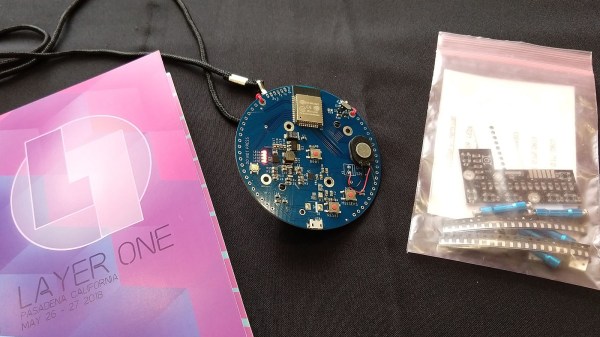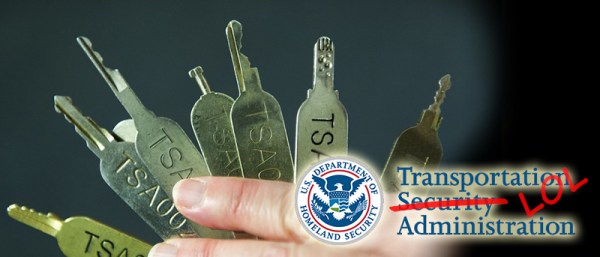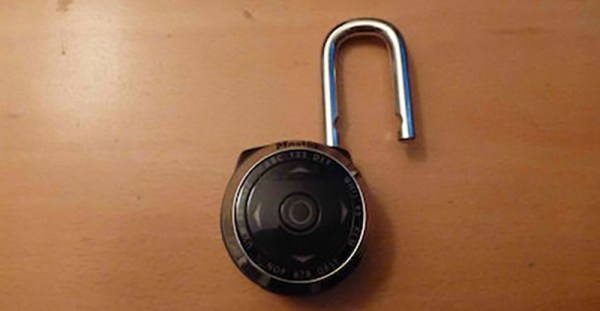The security conference LayerOne 2018 took place this past weekend in Pasadena, California. A schedule conflict meant most of our crew was at Hackaday Belgrade but I went to LayerOne to check it out as a first-time attendee. It was a weekend full of deciphering an enigmatic badge, hands-on learning about physical security, admiring impressive demos, and building a crappy robot.
lockpicking34 Articles
Hacking When It Counts: Prison Locksmithing
In 1978, Tim Jenkin was a man living on borrowed time, and he knew it. A white South African in his late 20s, he had been born into the apartheid system of brutally enforced racial segregation. By his own admission, he didn’t even realize in his youth that apartheid existed — it was just a part of his world. But while traveling abroad in the early 1970s he began to see the injustice of the South African political system, and spurred on by what he learned, he became an activist in the anti-apartheid underground.
Intent on righting the wrongs he saw in his homeland, he embarked on a year of training in London. He returned to South Africa as a propaganda agent with the mission to spread anti-apartheid news and information to black South Africans. His group’s distribution method of choice was a leaflet bomb, which used a small explosive charge to disperse African National Congress propaganda in public places. Given that the ANC was a banned organization, and that they were setting off explosives in a public place, even though they only had a few grams of gunpowder, it was inevitable that Jenkin would be caught. He and cohort Steven Lee were arrested, tried and convicted; Jenkin was sentenced to 12 years in prison, while Lee got eight.
Continue reading “Hacking When It Counts: Prison Locksmithing”
33C3: Breaking IoT Locks
Fast-forward to the end of the talk, and you’ll hear someone in the audience ask [Ray] “Are there any Bluetooth locks that you can recommend?” and he gets to answer “nope, not really.” (If this counts as a spoiler for a talk about the security of three IoT locks at a hacker conference, you need to get out more.)
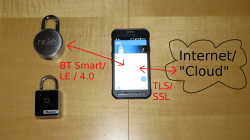 Unlocking a padlock with your cellphone isn’t as crazy as it sounds. The promise of Internet-enabled locks is that they can allow people one-time use or limited access to physical spaces, as easily as sending them an e-mail. Unfortunately, it also opens up additional attack surfaces. Lock making goes from being a skill that involves clever mechanical design and metallurgy, to encryption and secure protocols.
Unlocking a padlock with your cellphone isn’t as crazy as it sounds. The promise of Internet-enabled locks is that they can allow people one-time use or limited access to physical spaces, as easily as sending them an e-mail. Unfortunately, it also opens up additional attack surfaces. Lock making goes from being a skill that involves clever mechanical design and metallurgy, to encryption and secure protocols.
 In this fun talk, [Ray] looks at three “IoT” locks. One, he throws out on mechanical grounds once he’s gotten it open — it’s a $100 lock that’s as easily shimmable as that $4 padlock on your gym locker. The other, a Master lock, has a new version of a 2012 vulnerability that [Ray] pointed out to Master: if you move a magnet around the outside the lock, it actuates the motor within, unlocking it. The third, made by Kickstarter company Noke, was at least physically secure, but fell prey to an insecure key exchange protocol.
In this fun talk, [Ray] looks at three “IoT” locks. One, he throws out on mechanical grounds once he’s gotten it open — it’s a $100 lock that’s as easily shimmable as that $4 padlock on your gym locker. The other, a Master lock, has a new version of a 2012 vulnerability that [Ray] pointed out to Master: if you move a magnet around the outside the lock, it actuates the motor within, unlocking it. The third, made by Kickstarter company Noke, was at least physically secure, but fell prey to an insecure key exchange protocol.
Along the way, you’ll get some advice on how to quickly and easily audit your own IoT devices. That’s worth the price of admission even if you like your keys made out of metal instead of bits. And one of the more refreshing points, given the hype of some IoT security talks these days, was the nuanced approach that [Ray] took toward what counts as a security problem because it’s exploitable by someone else, rather than vectors that are only “exploitable” by the device’s owner. We like to think of those as customization options.
The Terrible Security Of Bluetooth Locks
Bluetooth devices are everywhere these days, and nothing compromises your opsec more than a bevy of smartphones, smart watches, fitbits, strange electronic conference badges, and other electronic ephemera we adorn ourselves with to make us better people, happier, and more productive members of society.
Bluetooth isn’t limited to wearables, either; deadbolts, garage door openers, and security systems are shipping with Bluetooth modules. Manufacturers of physical security paraphernalia are wont to add the Internet of Things label to their packaging, it seems. Although these devices should be designed with security in mind, most aren’t, making the state of Bluetooth smart locks one of the most inexplicable trends in recent memory.
At this year’s DEF CON, [Anthony Rose] have given a talk on compromising BTLE locks from a quarter-mile away. Actually, that ‘quarter mile’ qualifier is a bit of a misnomer – some of these Bluetooth locks are terrible locks, period. The Kwikset Kevo Doorlock – a $200 deadbolt – can be opened with a flathead screwdriver. Other Bluetooth ‘smart locks’ are made of plastic.
The tools [Anthony] used for these wireless lockpicking investigations included the Ubertooth One, a Bluetooth device for receive-only promiscuous sniffing, a cantenna, a Bluetooth USB dongle, and a Raspberry Pi. This entire setup can be powered by a single battery, making it very stealthy.
The attacks on these Bluetooth locks varied, from sniffing the password sent in plain text to the lock (!), replay attacks, to more advanced techniques such as decompiling the APK used to unlock these smart locks. When all else fails, brute forcing locks works surprisingly well, with quite a few models of smart lock using eight digit pins. Even locks with ‘patented security’ (read: custom crypto, bad) were terrible; this patented security was just an XOR with a hardcoded key.
What was the takeaway from this talk? Secure Bluetooth locks can be made. These locks use proper AES encryption, a truly random nonce, two factor authentication, no hard-coded keys, allow the use of long passwords, and cannot be opened with a screwdriver. These locks are rare. Twelve of the sixteen locks tested could be easily broken. The majority of Bluetooth smart locks are not built with security in mind, which, by the way, is the entire point of a lock.
[Anthony]’s work going forward will concentrate expanding his library of scripts to exploit these locks, and evaluate the Bluetooth locks on ATMs. Yes, ATMs also use Bluetooth locks. The mind reels.
Dear TSA: This Is Why You Shouldn’t Post Pictures Of Your Keys Online
We have to hand it to the Transportation Security Administration (TSA). They seem to have a perfect track record of screwing up – and that’s not an easy thing to accomplish if you think about it. If it’s not reports of TSA agents stealing valuables or inappropriately groping passengers, there is the fun fact that in all the years since it was created in 2001, the agency hasn’t caught a single person seeking to do harm in the friendly skies. We’re actually okay with that if it means nobody is trying to do anything shady.
The most recent TSA folly seemed to practically fall into the Internet’s lap when a reporter for the The Washington Post published a hi-res picture of the entire set of TSA master keys while writing an article about how the TSA handles your bags after checking them at the counter. Well, the lock picking community when nuts and in a short time had 3D printed versions available and working. You can see it in action in the (twitter) video after the break.
For those that are not familiar with travel in the US, you are not allowed to use just any old lock on your bags. It has to be approved by the TSA – and that means that they have to be able to open it. So the TSA agents have a set of master keys that can open any bag if they need to look inside for some reason. If you put a non-TSA approved lock on the bag, that can make them a little angry, and you risk having your bag delayed or even cut open.
Of course, you can get into just about any suitcase with a ball point pen, so maybe this isn’t a real “security” issue, but it sure isn’t what you want to see from the agency that is supposed to protect you. Who knew that you could make keys from a photograph? We did way back in 2009 and way more in depth this May… maybe the TSA should start reading Hackaday?
Continue reading “Dear TSA: This Is Why You Shouldn’t Post Pictures Of Your Keys Online”
Pictures That Defeat Key Locks
We’re at LayerOne this weekend and one of the talks we were excited about didn’t disappoint. [Jos Weyers] presented Showing Keys in Public — What Could Possibly Go Wrong? The premise is that pictures of keys, in most cases, are as good as the keys themselves. And that pictures of keys keep getting published.
[Jos] spoke a bit about new services that offer things like 3D scanning and storage of your key for printing when you get locked out, or apps that ask you to take a picture of your key and they’ll mail you a duplicate. Obviously this isn’t the best of ideas; you’re giving away your passwords. And finding a locksmith is easier than findind a 3D printer. But it’s the media gaffs with important keys that intrigues us.
We’ve already seen the proof of concept for taking covert images to perfectly duplicate a key. But these examples are not so covert. One example is a police officer carrying around handcuff keys on a belt clip. Pose for a picture and that key design is now available to all. But news stories about compromised keys are the biggest offenders.
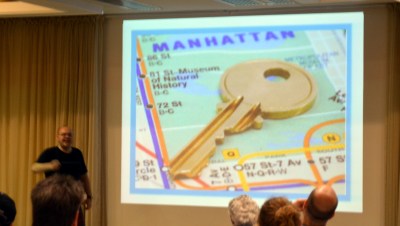 A master key for the NYC Subway was compromised and available for sale. The news coverage not only shows a picture at the top of the story of a man holding up the key straight on, but this image of it on a subway map which can be used to determine scale. This key, which is still published openly on the news story linked above, opens 468 doors to the subway system and these are more than just the ones that get you onto the platform for free. We were unable to determine if these locks have been changed, but the sheer number of them has us thinking that it’s unlikely.
A master key for the NYC Subway was compromised and available for sale. The news coverage not only shows a picture at the top of the story of a man holding up the key straight on, but this image of it on a subway map which can be used to determine scale. This key, which is still published openly on the news story linked above, opens 468 doors to the subway system and these are more than just the ones that get you onto the platform for free. We were unable to determine if these locks have been changed, but the sheer number of them has us thinking that it’s unlikely.
 Worse, was the availability of fire-department
Worse, was the availability of fire-department master keys which open lock boxes outside of every building. (Correction: these are fire department keys but not the actual lock-box keys) A locksmith used to cut the original keys went out of business and sold off all their stock. These keys were being sold for $150, which is bad enough. But the news coverage showed each key on a white background, straight on, with annotations of where each type of key will work.
Other examples include video news stories about credit card skimmers installed in gas pumps — that coverage showed the key used to open the pump housing. There was also an example of speed camera control cabinet keys being shown by a reporter.
 [Jos’] example of doing the right thing is to use a “prop” key for news stories. Here he is posing with a key after the talk. Unfortunately this is my own house key, but I’m the one taking pictures and I have blurred the teeth for my own security. However, I was shocked during image editing at the quality of the outline in the image — taken at 6000×4000 with no intent to make something that would serve as a source for a copy. It still came out remarkably clear.
[Jos’] example of doing the right thing is to use a “prop” key for news stories. Here he is posing with a key after the talk. Unfortunately this is my own house key, but I’m the one taking pictures and I have blurred the teeth for my own security. However, I was shocked during image editing at the quality of the outline in the image — taken at 6000×4000 with no intent to make something that would serve as a source for a copy. It still came out remarkably clear.
Some locks are stronger than others, but they’re all meaningless if we’re giving away the keys.
Teardown: An Electronic Master Lock
[rohare] has an interesting teardown for us over on the keypicking lock picking forums. It’s a Masterlock combination lock – specifically the Masterlock 1500eXD – and yes, it’s a completely electronic lock with buttons and LEDs. Think that’s the mark of a terrible lock? You might be surprised.
The first impressions of this lock were surprisingly positive. It was heavy, the shackle doesn’t move at all when you pull on it. Even the buttons and LEDs made sense. Once the back of the lock was drilled open, things got even more impressive. This lock might actually be well-built, with a ‘butterfly’ mechanism resembling a legendary padlock, actuated by a small but sufficient motor. Even the electronics are well-designed, with the programming port blocked by the shackle when it’s closed. [rohare] suspects the electronics aren’t made by Masterlock, but they are installed in a very secure enclosure.
The teardown concludes with a fair assessment that could also be interpreted as a challenge: [rohare] couldn’t find any obvious flaws to be exploited, or a simple way to break the lock. He concludes the most probable way of breaking this lock would be, “knowing some trick of logic that bypasses the codes on the electronics”. That sounds like a good enough challenge for us, and we’re eagerly awaiting the first person to digitally unlock this physical lock.

